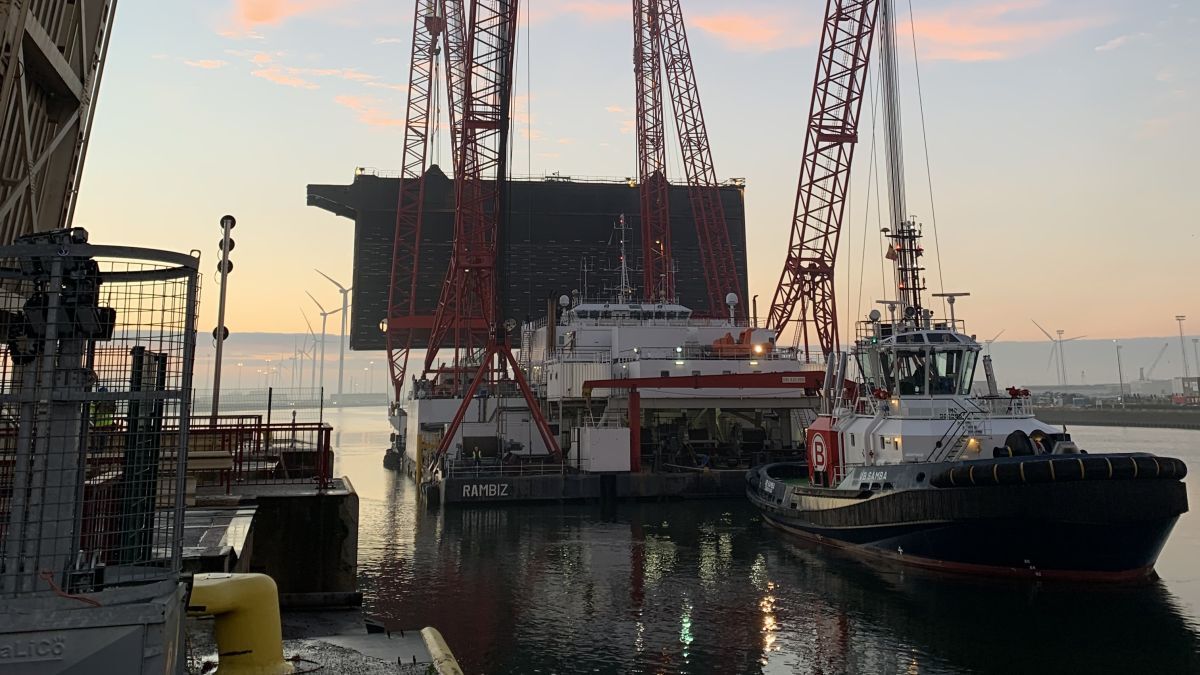 VB Samba is compliant with IMO Tier III emissions regulations (source: Boluda Towage)
VB Samba is compliant with IMO Tier III emissions regulations (source: Boluda Towage)
Ports need to work with tugboat owners investing in alternative fuels to cut gaseous emissions
Tug owners are faced with many choices for low-emissions propulsion, with different technical suitability, availability and economic viability of fuels. There is a lack of clarity in which fuels to select for tugboats, however, there is a growing view that ports need to work with tug owners selecting green solutions.
“The road to decarbonisation is a combined path as we need to comply with environmental regulations per country and port,” says Boluda Towage Europe fleet manager Stijn van Beneden. “Tug owners need to be included in future port plans. There needs to be supporting facilities in the port for tugs.”
There are demand and supply issues to overcome. Ports need to provide bunkering facilities for future fuels and owners need to invest in the vessels to consume them, requiring long-term strategies, plans and towage concessions for tugboat owners.
“It is not just about decarbonisation, there are other factors, such as international and local rules, port authorities and a willingness of ports to invest in future fuels,” says Mr van Beneden.
Fuel selection would also be determined by the operating profile of tugs and the type of ships in ports requiring their services.
“We will be operating new fuels daily, which will have a direct impact on harbour operations and the environment,” says Mr van Beneden. “Port operations and the operating profile of tugs determines the fuel to use in that specific area.”
Reducing emissions should not just focus on lowering greenhouse gas (GHG) output as regulations in northern Europe and the US also cover minimising nitrogen oxides and particulates. IMO Tier III standards cover these in emission control areas such as the North Sea, Baltic and the English Channel, and are becoming more widely used for greener tug newbuildings and retrofits.
Boluda Towage operates one of the largest fleets of tugs complying with IMO Tier III standards in Europe. With a global fleet of more than 300 tugs, it will not replace or retrofit them all to use low-emissions fuels.
Instead, it will consider using biofuels or mixing hydrogen or methanol into a diesel fuel to combust in existing engines, says Mr van Beneden.
Hydrogen and methanol dual-fuel options are retrofit-friendly, but hydrogen as a single fuel and fully electric options are not, he adds. All the options considered would meet environmental requirements for 2030, but not all will meet zero-emissions targets in 2050.
“Biofuel is easy to adopt, but we believe it will become more expensive. Other options are hydrogen, methanol and ammonia,” says Mr van Beneden.
During tests with biofuels, Boluda noticed engine parts were cleaned by the fuel, but the soot from the exhaust stack was sticking to the decks. “We had problems removing this and used chemical products to do it,” he explains. Another downside was the lack of sustainable certification and the CO2 emitted during these tests was similar to those of conventional diesel. “Lack of certification and price were holding us back,” says Mr van Beneden.
Another option to consider is hybrid propulsion with batteries and hydrogen or methanol as range extenders.
“We have done tests with biofuels, and we are currently studying carbon-free fuels to see how to implement them in our business,” he adds. “We have retrofitted vessels with new technology, with hybrid propulsion and for IMO Tier III compliance.”
Mr van Beneden says fuel cells could be installed on tugs, but existing technology “is too costly and the dimensions needed are too big to fit into tugs.” They are therefore not technically nor economically feasible for use on tugboats.
He expects in five years, alternative fuels will be better tested and more available in ports. He recommends tug owners test new fuels and blends on tugboats, and ports work with owners to implement low-emissions fuels. “In ports, it will be a mix of what can be used and what is most practical,” Mr van Beneden says.
“Owners should get to know possible choices of fuel and work together with ports.”





